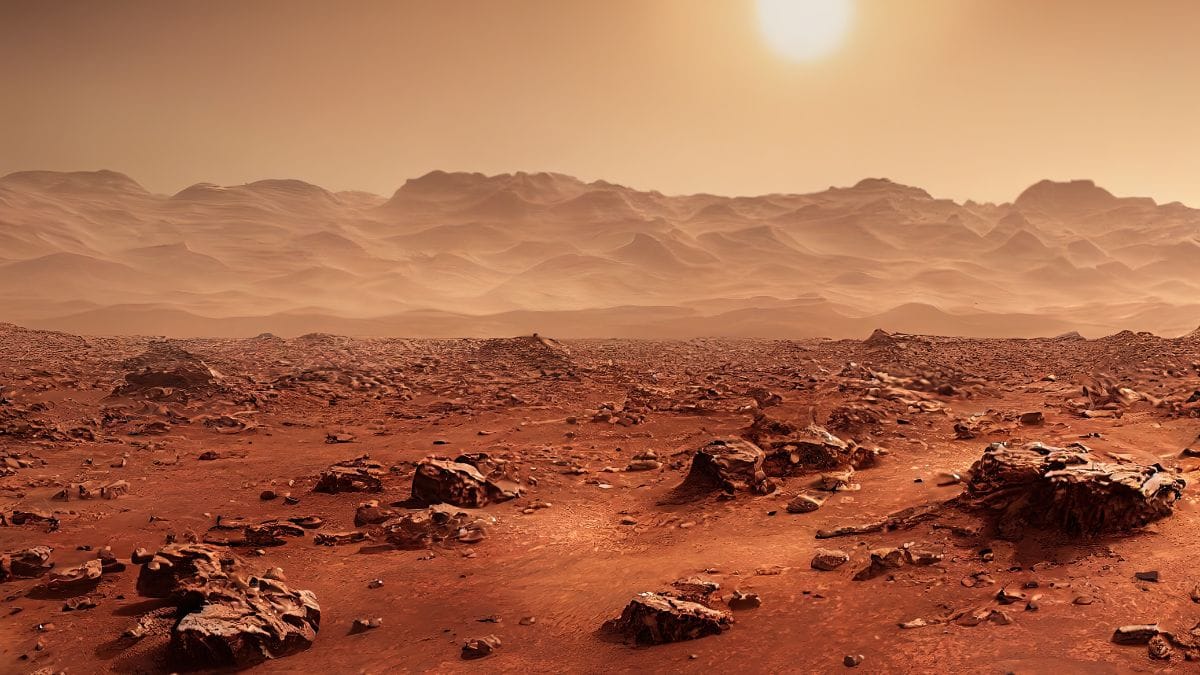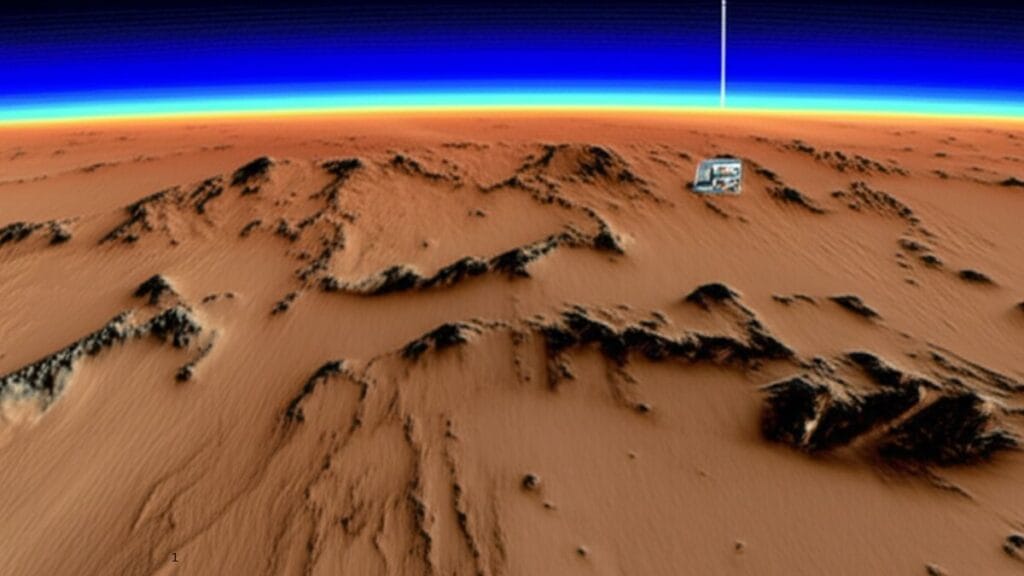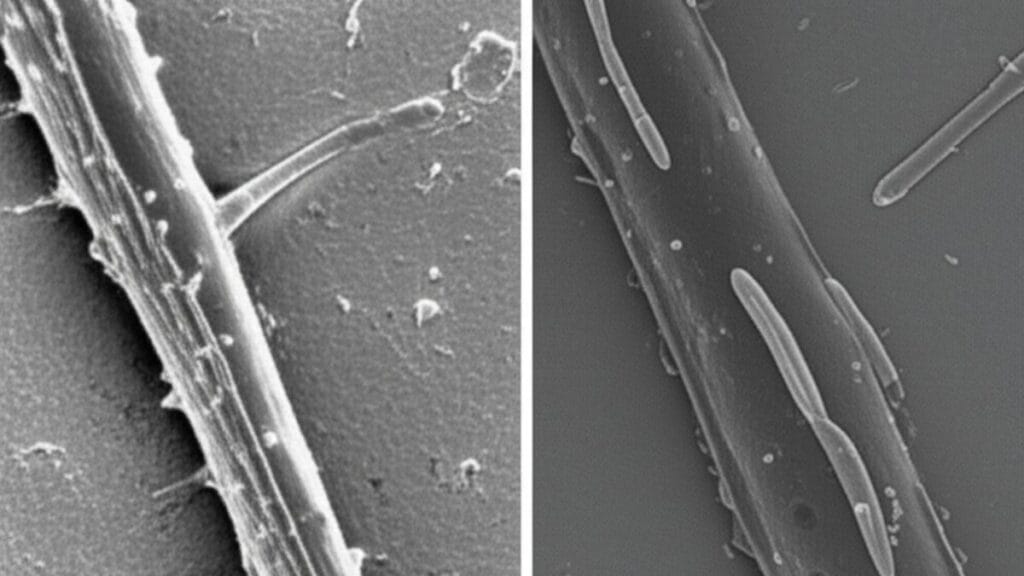
Have you ever thought about what it would be like to explore another planet? Imagine a place far, far away, with red dust and strange rocks. NASA has a special robot car, called the Curiosity rover, that is driving around on the planet Mars. This amazing rover has been sending back pictures and information about Mars for many years. Recently, something really interesting happened. Curiosity found something on a Martian rock that scientists have never seen before! What could this mysterious discovery be?
What did the Curiosity rover find on Mars?
The Curiosity rover was exploring an area on Mars called Gale Crater. This is a very old and interesting place that scientists believe might have once had water. While driving over some rocks, Curiosity’s cameras took pictures of something unusual. On the surface of one of the rocks, there were small, stick-like shapes. These shapes were very tiny, only a few millimeters long. They looked different from the other rocks and sand around them. Scientists were very surprised when they saw these pictures because they had never seen anything quite like this on Mars before.

Could these stick-like shapes be signs of past life on Mars?
This is the big question that everyone is asking! When we see shapes that look like they could be from living things, it makes us wonder if life ever existed on Mars. On Earth, many living things, like tiny worms or even some bacteria, can leave behind shapes or fossils in rocks. So, scientists are carefully studying these stick-like shapes to see if they could be evidence of past life on Mars. However, it is important to be careful. There are many ways that non-living things can also create interesting shapes in rocks. For example, the wind or water can sometimes carve rocks into unusual forms.

What will scientists do next to learn more about these Martian shapes?
Scientists are very excited about this discovery and they have a plan to learn more. The Curiosity rover has many tools that it can use to study these rocks up close.
- Taking more pictures: Curiosity will take many more detailed pictures of the stick-like shapes from different angles. This will help scientists see their exact size and how they are arranged on the rock.
- Using its laser: The rover has a special laser that can zap tiny parts of the rock. By studying the light that comes back after the zap, scientists can figure out what the rock is made of. This could tell them if the stick-like shapes are made of different materials than the rest of the rock.
- Analyzing the chemistry: Curiosity also has tools to analyze the chemicals in the rocks and the soil. This can help scientists understand if there were ever conditions on Mars that could have supported life.
- Looking at other rocks: The rover will continue to explore the area to see if it can find more of these strange shapes on other rocks. This could help them understand how common these shapes are and how they might have formed.
What are some other amazing things the Curiosity rover has found on Mars?
Curiosity has been exploring Mars for over a decade, and it has made many other exciting discoveries!
- Evidence of past water: Curiosity found rocks and minerals that could only have formed in the presence of liquid water. This tells us that Mars was once a much wetter place than it is today.
- Organic molecules: The rover has found organic molecules, which are the building blocks of life as we know it. While finding organic molecules doesn’t mean that life existed, it shows that the ingredients for life were once present on Mars.
- Methane gas: Curiosity has also detected methane gas in the Martian atmosphere. On Earth, methane is often produced by living things, but it can also be produced by geological processes. Scientists are still studying the source of the methane on Mars.
- Beautiful landscapes: The rover has sent back stunning pictures of the Martian surface, showing mountains, canyons, and sand dunes. These images help us understand the geology of Mars.
Why is it important to explore Mars?
Exploring Mars is important for many reasons. It helps us to:
- Learn about our solar system: By studying Mars, we can learn more about how planets form and change over time. This can help us understand Earth’s history and future.
- Search for life beyond Earth: Mars is one of the most likely places in our solar system where life might have existed in the past, or even could still exist today. Finding evidence of life on Mars would be a huge discovery and would change our understanding of our place in the universe.
- Prepare for future human missions: NASA and other space agencies have plans to send humans to Mars in the future. The work that rovers like Curiosity are doing helps us to understand the dangers and challenges of living and working on Mars.
- Inspire the next generation: Exploring space is exciting and can inspire young people to study science, technology, engineering, and math (STEM).

Conclusion
The discovery of these strange, stick-like shapes on Mars by the Curiosity rover is a fascinating mystery. While we don’t know for sure what they are, they have sparked a lot of excitement among scientists and people all over the world. The ongoing exploration of Mars continues to reveal new surprises and helps us to better understand our place in the cosmos. What other incredible secrets might Mars be hiding?
📌 Frequently Asked Questions
Did NASA’s Curiosity rover find life on Mars?
As of July 2025, NASA’s Curiosity rover has not definitively found evidence of current or past life on Mars. The stick-like shapes are interesting and are being studied to see if they could be related to life, but more evidence is needed to answer this big question. Scientists are carefully analyzing the chemical makeup and structure of these shapes and the rocks around them to understand their origin. This process takes time and careful investigation.
What is NASA’s Curiosity rover doing right now on Mars?
Currently, the Curiosity rover is continuing its exploration of Gale Crater. It is driving to different locations, taking pictures, analyzing rocks and soil, and sending data back to Earth. Scientists are directing it to areas that look particularly interesting or that could help them learn more about Mars’ past. The rover is using its wheels to travel and its robotic arm to interact with the Martian environment.
How long has the Curiosity rover been on Mars?
The Curiosity rover landed on Mars in August 2012. So, by July 2025, it has been exploring the Red Planet for nearly thirteen years. It was designed for a primary mission of about two Earth years, but it has been working much longer than expected! This long operational life has allowed it to make many significant discoveries and travel a considerable distance across the Martian surface.
What is Gale Crater, and why is Curiosity exploring it?
Gale Crater is a large impact crater on Mars that scientists believe once held a lake billions of years ago. It has a tall mountain in the center called Mount Sharp, which contains layers of rock that record the history of Mars over billions of years. Curiosity is exploring the lower slopes of Mount Sharp to study these layers and learn about Mars’ ancient environment and whether it could have supported life. The different layers of the mountain are like pages in a history book, waiting to be read.
What kind of tools does the Curiosity rover have?
The Curiosity rover is equipped with many scientific instruments, including cameras for taking pictures and videos, a laser to vaporize rocks and analyze their composition, a drill to collect rock and soil samples, and various sensors to measure things like temperature, radiation, and wind speed. It also has a robotic arm that it uses to position its instruments and collect samples. These tools allow scientists to perform detailed investigations of the Martian environment without being physically present.
Has any other rover found something similar on Mars?
While other Mars rovers like Perseverance and Opportunity have made important discoveries, the stick-like shapes found by Curiosity are unique and haven’t been reported by other missions in the same way. Each rover explores different areas and has different instruments, so they are all contributing to our understanding of Mars in their own ways. The variety of findings highlights how diverse the Martian surface and its history might be.
How do scientists know if something found on Mars is from life or just a rock formation?
Scientists use many different methods to try to determine if something could be a sign of life. They look at the shape and structure, the chemical composition, and the surrounding environment. For something to be considered evidence of past life, scientists would need to find multiple lines of evidence that all point in the same direction and rule out non-biological explanations. This careful process helps avoid making premature or incorrect conclusions.
When will humans go to Mars?
Several space agencies, including NASA, have goals to send humans to Mars in the future. Currently, NASA is aiming for crewed missions to Mars sometime in the late 2030s or early 2040s. However, these timelines can change depending on technological developments and funding. Sending humans to Mars is a very complex and challenging undertaking that requires significant preparation.
What is the Perseverance rover doing on Mars right now?
NASA’s Perseverance rover landed in Jezero Crater, which is another area on Mars believed to have once held a lake. Perseverance is collecting rock and soil samples that could contain signs of past microbial life. These samples are planned to be returned to Earth in future missions for detailed study. Perseverance also has a small helicopter companion called Ingenuity, which has been used for scouting flights. The samples collected by Perseverance could hold crucial clues about whether life ever existed on Mars.
How can I learn more about the exploration of Mars?
You can learn more about the exploration of Mars by visiting the websites of NASA and other space agencies. They have lots of information, pictures, and videos about the rovers, the science they are doing, and the latest discoveries. You can also follow space-related news and documentaries. These resources can provide a wealth of information and help you stay up-to-date on the exciting discoveries being made on the Red Planet.
Leave a Reply